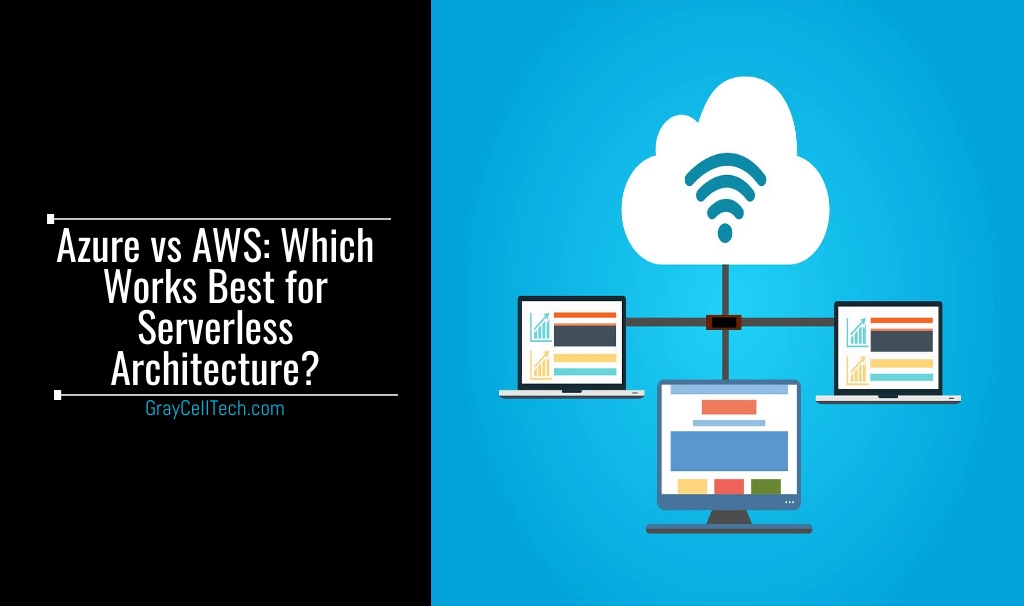Azure is a cloud service platform built by Microsoft. This platform offers services in different domains – compute, storage, database, networking, developer tools, and other functionality that help companies to scale and grow their businesses. Azure services are of three different types:
- Platform as a Service (PaaS)
- Software as a Service (SaaS)
- Infrastructure as a Service (IaaS)
Developers and software employees use these services to create, deploy, and manage services and applications through the cloud.
AWS (Amazon Web Services) is a cloud service platform by Amazon. It offers services in different domains: compute, storage, delivery, and other functionality that help businesses scale and grow. These domains can be used in the form of services to create and deploy different types of applications in the cloud platform.
Microsoft Azure and Amazon AWS are similar systems as they are mostly designed to cover the same areas and offer comparable functionality to solve the same set of problems.
Let’s now understand how Azure and AWS are different from each other.
How Azure Is Different From AWS?

Basic Features & Services
Both Azure and AWS are similar in terms of basic capabilities. They share the common elements of public cloud services such as self-service, instant provisioning, compliance, security, auto-scaling, and identity management.
Between these two cloud giants, AWS offers 140 services across computing, database, analytics, storage, mobile, and developer tools. Amazon Web Services have a head start on everyone else as this platform has been around the longest.
On the other hand, Azure has strong features and services. It has a parent company that has resources to hold their own services against Amazon.
Computing Power
A standard requirement for an IT team is computing power. Investing in cloud services requires enough horsepower to keep up with the daily office demands (during high-traffic periods).
The fundamental issue is scalability. AWS (Amazon Web Services) utilizes elastic cloud computing, EC2 (an available resource footprint that can grow or shrink on demand using cloud computing) with a local cluster that provides partial resources available to all jobs.
AWS EC2 users are capable of configuring their virtual machines, selecting the pre-configured or customized machine images (MIs). They can also select the size, power, memory capacity, and the number of virtual machines they want to use.
On the contrary, Azure users can choose a virtual hard disk to create a virtual machine. It can be pre-configured by Microsoft, users, or a third-party. For scalability purposes, it relies on a virtual scale.
The main difference between AWS and Azure is that EC2 can be customized to a range of options, whereas Azure virtual machines can pair with other tools to help deploy applications on the cloud.
Storage

Both Azure and AWS can successfully deploy cloud services as they have sufficient storage to get the job done.
In AWS, storage relies on machine instances, i.e., virtual machines hosted on AWS infrastructure. Storage is linked to individual instances – temporary storage is allocated once per instance and destroyed when an instance is terminated. Moreover, you can get block storage linked to an instance, similar to a hard drive.
For object storage, you can get it through S3; for data archiving, you can get it through Glacier.
Talking about Azure, it offers temporary storage through D drive and block storage through Page Blobs for virtual machines, with Block Blobs and Files doubling as object storage. Similar to AWS, Azure supports relational databases, Big Data, and NoSQL through Azure Table and HDInsight.
Azure offers Hot storage as well as Cool storage. Although cool storage is less expensive, it requires additional read and write costs. In the case of AWS, there are S3 Standards and S3 Standard-Infrequent Access.
Both Azure and AWS have unlimited allowed objects. However, AWS and Azure have an object size limit of 5 TB and 4.75 TB respectively.
Database

Both AWS and Azure have robust database offerings whether you need a relational database or a NoSQL offering.
The SQL database of Azure is based on Microsoft SQL only, whereas the relational database service of Amazon supports the following database engines:
- Amazon Aurora
- Microsoft SQL
- MariaDB
- MySQL
- Oracle
- PostgreSQL
Azure, as well as AWS, works perfectly with NoSQL and relational databases. Both are highly available and durable and offer easy and automatic replication.
There are more instance types you can provision, however, the interface and tools of Azure are user-friendly and can perform database operations easily.
Network & Content Delivery
Finding an isolated and secure network is a major concern among cloud users. It is a security issue. A company has several valuable secrets that its competitors or hackers would love to access. It means that network performance is critical in a cloud solution. Therefore, Azure and AWS have their spin on creating isolated networks.
AWS utilizes VPC (virtual private cloud) to enable users to create isolated private networks within the cloud. It then utilizes API gateways for cross-premises connectivity. During networking, ensure smooth operation by utilizing elastic load balancing.
There are plenty of options available to users within a VPC, such as creating subnets, private IP ranges, route tables, and network gateways.
Azure utilizes a virtual network rather than a VPC. It enables users to create isolated networks, subnets, private IP ranges, route tables, and network gateways.
For cross-network connectivity, we use a VPN gateway. The load balancer and application gateway handles load balancing.
Azure and AWS offer firewall options and solutions. They help to extend the on-premises data center into the cloud without compromising on data.
Pricing Model
Entrepreneurs do not always choose the best software solution, sometimes they choose a solution available at the best price. Both Azure and AWS offer a pricing model that you can pitch to upper management without breaking a sweat. Both offer introductory tiers to give you a taste of how their systems can integrate with your on-premise software. But, there is a significant difference in the billing structure. Azure and AWS have a pay-as-you-go structure. They help you to change or end your contract anytime.
AWS charges per hour with instances that can be purchased on-demand (i.e., pay for what you use), spot (i.e., bid for extra available capacity), and reserved (i.e., reserve an instance for 1 to 3 years with upfront costs based on use).
On the other hand, Azure charges per-minute and offers a more exact pricing model in comparison to AWS. Azure offers short-term commitments and allows users to choose either monthly or pre-paid charges.
You can also receive BT MPLS ExpressRoute pricing for Microsoft Azure, i.e., you can extend your private business network into the cloud with the functionality that you need at an affordable price.
Which One Is Best: Azure or AWS?
Although both Azure and AWS are well-made solutions having good functionality and can be integrated into your organization successfully, they have their pros and cons.
Microsoft’s Azure is a relatively young cloud solution. Microsoft increased the speed of Azure’s development process by adapting its pre-existing on-premises solutions for the cloud. Moreover, Microsoft is ubiquitous. Worldwide organizations and enterprises rely on Microsoft applications and solutions. Since Azure is tightly integrated with these solutions, it fits in with other Microsoft solutions like it was always there.
Organizations that rely on Microsoft solutions will have a much easier time integrating Azure than AWS. Also, Microsoft customers have an advantage that they will get a great discount on Azure.
Azure is less enterprise-ready than AWS. It shows through in its enterprise performance as Azure is a younger program than AWS.
The greatest strength of AWS is its overwhelming dominance in the cloud services market for 10 years. AWS has a pre-existing infrastructure that many of its competitors haven’t fully developed. However, it is not a cheap option, which is why organizations find it difficult to make heads or tails of AWS’s pricing structure that makes it harder to manage costs effectively and justify it to upper management.
Having said that, the strengths of AWS outweigh its weaknesses due to which it became the leader of the pack for many years.
Conclusion
It is essential to choose your cloud provider based on your business requirements. By now, you must have a better understanding of Azure and AWS. In case you are searching for a wide range of services or Infrastructure as a Service (IaaS), you must opt for AWS. However, if you are searching for windows integration or a good Platform as a Service (PaaS) cloud provider, you should opt for Azure.






